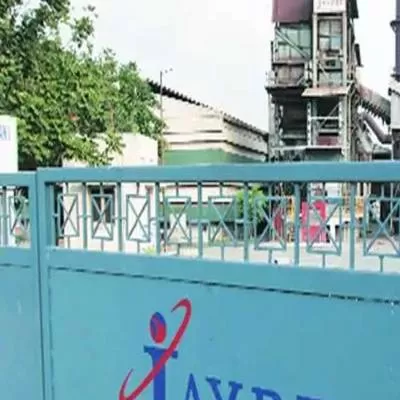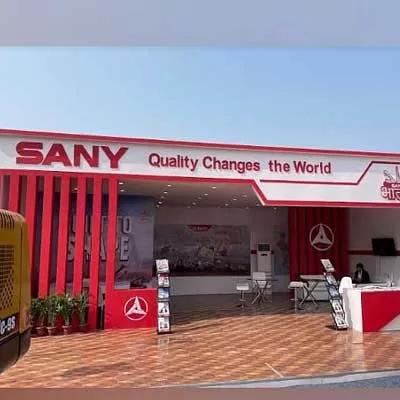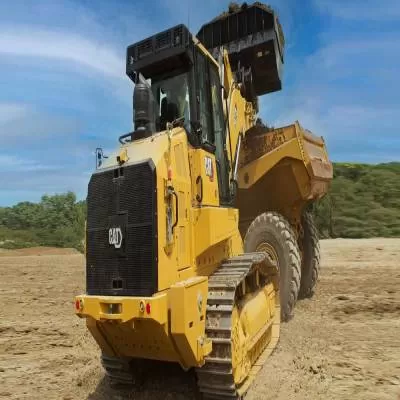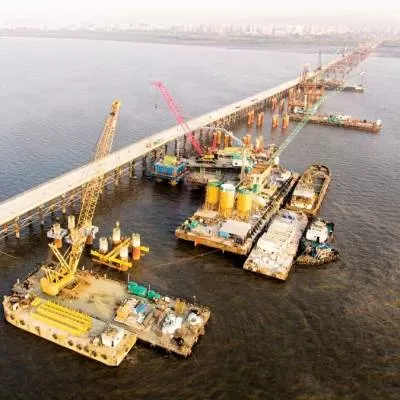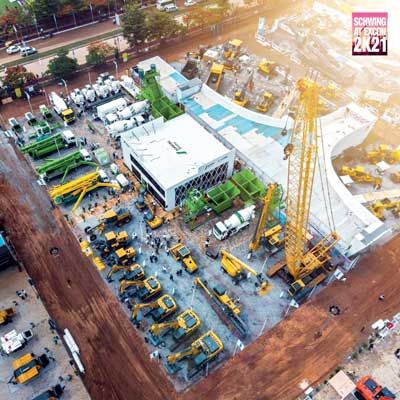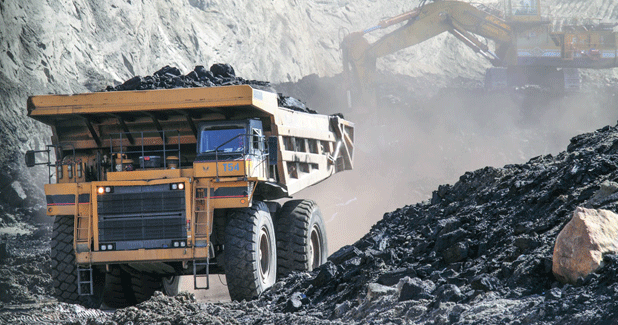
Back to Prospecting
ICRA Research estimates that demand for mining equipment from the private sector contracted by 30-40 per cent during 2013-14. It further predicts that this trend will continue into 2014-15, at least until regulatory hurdles hampering the sector are resolved.
¨Construction equipment demand from the mining sector has been sluggish over the past six to eight quarters,¨ agrees Rajesh Shrivastava, General Manager, Marketing, Terex India.
Coal woes
At the moment, the industry is abuzz with the Supreme Court ruling de-allocating almost all the 218 captive coal mining blocks allocated between 1993 and 2010. It is an unprecedented judgement in many ways. Shrivastava draws parallels between it and the ´too-big-to-fail´ theory propounded by western economists during the 2008 economic meltdown, saying, ¨The government and industry hypothesis on the situation was no less similar, but the Supreme Court´s action was pretty upright and a severe blow to any such misgivings harboured by the industry. Businesses now have to live with it or, as we say, discount it.¨
Beyond doubt, the move has dealt a significant blow to the outlook for mining equipment over the immediate and medium term. On the face of it, Coal India Ltd (CIL) has been mandated to take over the operations of these de-allocated mines from April 2015. ¨Practically, however, a lot depends on its ability to effect a smooth transition within the modalities, which the government is yet to finalise,¨ says Pavethra Ponniah, Lead Analyst, Mining and Construction Equipment Sector, ICRA Ltd.
In the short to medium term, CIL and its subsidiaries will largely drive demand for mining equipment in the coal segment, given the limited demand from the private sector. But in view of the current uncertainties, Ponniah expects fresh and replacement demand for mining equipment to be muted this year. Other sectors, such as limestone, sand, and iron ore, among others, where the demand is largely private, would also face some heat from the fallout of the coal mining issues. ICRA Research expects a full revival only by 2017-2018.
¨The impact will be adverse,¨ agrees Shrivastava. ¨It could take two to three years for the industry to revive. Coal block operating companies are neck deep in debt and now they will raise more cash to pay penalties and reapply for a license. Their spending on any new capex for at least the next four quarters is unlikely.¨
The positives
What good may come out of the current adversity? AM Muralidharan, Former President, Volvo Construction Equipment India, observes that the Supreme Court´s decision affects only about 10-12 per cent of the entire coal mining in India. Moreover, he sees an opportunity for newness to drive growth. ¨Some review of the allotment method was impending,¨ he points out. ¨With system improvements, the industry could bounce back even better. Just the timeline in which the new government will issue new guidelines is a worry.¨
For his part, Mehul Sukkawala, Director, Corporate and Infrastructure Ratings, Asia Pacific, Standard & Poor´s, says, ¨The Supreme Court ruling could lead to an improved process for allocating coal mines and boost the supply of coal in a country that faces severe shortage of the fuel.¨ In the near term, Sukkawala analyses, the cancellation of coal blocks will increase uncertainty for the operations and investment plans of directly affected companies and those that were expecting to source coal from them. It could also hurt the significantly improved investor sentiment in India following the election outcome earlier this year.
But in the long term, a transparent allocation policy for coal blocks, which will most likely be an auction, will play an important role in determining the profitability and strategy of coal consuming companies. Combined with a streamlined process for getting environmental clearances and approvals for land acquisition, this would give these companies the confidence to invest and revive their long-pending projects. In time, Sukkawala believes, the government may extend the solution for coal miners to the mining of iron ore, bauxite and other minerals. Doing so could help resolve issues plaguing the mining sector for the past few years.
Near-term opportunities
As for the short-term positives for the industry, Muralidharan says, ¨Affirmative signals have been seen in Goa with the auctioning of the existing stock of iron ore. At least some movement has started, although it will be quite a while before all the mining activities come back to normal capacity.¨
According to Shrivastava, ¨Mining industry in India has to look at global cues now. Demand spurts in iron ore, copper, manganese and other metals could bring some opportunities, but these will be short-lived, as they are highly volatile. Only a few operators in India are capable of riding out this phase, or even taking advantage of it. Mine-port rail corridor and port infrastructure to handle mining produce and the mandate to comply with environmental regulation will be the key levers and may throw up some opportunities.¨ Interestingly, Terex is focusing on first-time users û in particular, rural youth - who are willing to invest in one machine, a backhoe loader or skid steer loader, and play a role in their local rural or semi urban economy. ¨We want to associate our brand with such transformers,¨ explains Shrivastava.
¨Going forward, I see good demand for excavators or shovels of size 9 to 15 cu m, drill machines (of 115-165 mm diameter) and other support equipment like dozers (600-900 HP) for open-pit application and low-profile dump trucks (35-60 T), loaders (15-17 T) and drill machines (64-102 mm diameter) for underground applications,¨ says Sunil Duggal, Deputy CEO, Hindustan Zinc Ltd.
Overseas influx
Today, the Indian mining equipment market is populated by Indian and leading global brands. The foreign invasion has augured well for end-users. According to Amit Gossain, Executive Vice President-Sales, Marketing and Business Development, JCB India Ltd, ¨This expansion of the market has paved the way for the availability of technology across all product lines. Machines such as JCB´s JS 220 22T tracked excavator offer operators greater control on the operating efficiency through an onboard advanced management system. Customers today have equipment to suit their specific requirements.¨
¨The influx of overseas brands has compelled local equipment makers to focus on operator comfort and safety,¨ says Shrivastava. ¨Also, we strive for improvements in the vendor value chain and help them upgrade by investing in good designing and engineering capabilities.¨
Popular differentiators
Current low demand and a populous equipment market make it extremely important for brands to differentiate themselves from their competitors.
Volvo India´s excavator´s most notable standout feature is its low cost of operations. ¨In the mining sector, it is common for operators to work 20-22 hours a day,¨ elaborates Muralidharan. ¨Lowering the cost of operations per cubic metre becomes a major priority when the working hours are stretched so much. Our EC 480D and EC700 models offer 5 per cent better fuel efficiency and 5-7 per cent higher productivity than comparable models. Prompt service and support are also critical. We have set 90 per cent availability as a benchmark and our response time meets that objective.¨ In different parts of the globe, including India, ThyssenKrupp offers customers in the minerals, mining and solid bulk material handling segments solutions best suited for their specific locations and operating conditions. According to KS Kumar, Senior General Manager-Marketing, ThyssenKrupp Industries India, ¨What makes this possible is the presence of ThyssenKrupp´s major engineering offices and R&D centres at different locations globally, including India, and its well-equipped headquarters in Germany. Essentially, ThyssenKrupp´s size by virtue of its global presence helps it conduct such in-depth research and offer specific solutions, which differentiates it from other players.¨
Meanwhile, JCB earthmoving machines find use in creating and maintaining access roads to mines and haulways and in the re-handling of coal at railway sidings to fill up rakes. JCB India has endeavoured to ensure that its wheeled loaders offer customers the best possible value proposition - attachments to make machines more versatile, long and reliable duty cycles, outstanding fuel efficiency, low operating costs and a product support network spanning 60 dealers with over 600 support outlets. ¨Both 430ZX Plus, a 3T payloader and the larger 432ZX with a 3.3T payload, can handle various buckets including larger coal re-handling buckets and feature rugged ´Z Bar Geometry´,¨ says Gossain. Offering machines designed for India is also top priority. JS 205, a 20-tonne tracked excavator, has been developed keeping arduous Indian conditions in mind.
And, Terex´s global equipment portfolio has been modified according to Indian soil strata and operating conditions to exceed Indian customer´s requirements of higher productivity and lower operating costs.
Opportunity gaps
All considered, is there room for these product portfolios to widen further? BV Raisinghani, President (Purchase), Jaiprakash Associates Ltd, responds by identifying the following gaps in the availability of mining equipment: ¨Loaders and excavators of capacity more than 10 cu m, dumpers of more than 100-tonne capacity, hydraulic drilling machines, ventilation fans and ducting for underground mining, and loaders for underground mining access tunnels capable of coping with gradients. It would be helpful if more mining equipment were to be made in India.¨ However, Duggal sees no gaps in the availability of mining equipment in India. ¨Atlas Copco, Sandvik, Caterpillar, Komatsu, etc, are manufacturing such equipment in Sweden, Finland, the US, Japan, Germany, etc. With the exception of 100-tonne class trucks and small excavators (less than 6 cu m), most mining equipment is being imported in India with a lead time of four to six months,¨ he says. Vendors, take your cue from industry voices. Make in India and cut lead times!
Quick Bytes
- Demand from private sector contracted by 30-40% during 2013-14.
- Complete revival expected by 2017-18.
- Foreign invasion has augured well for end-users.
- In demand: Excavators or shovels, drill
- machines, dozers, dump trucks and loaders.
What should you look for in a mining equipment vendor?
Sunil Duggal, Deputy CEO, Hindustan Zinc Ltd, shares a few pointers:
- Total cost of ownership over the entire lifecycle is most important in mining machinery and maintenance contracts can influence this. We opt for two kinds of maintenance models: Maintenance contract to the OEM, and the cost-per-hour model. We purchase mining equipment on the condition that the OEM will set up maintenance facilities because the skills required to maintain such equipment are not readily available and the equipment is not used by other industries except mining. Much equipment brought to India for the first time is only being used by us, such as Sandvik´s V30 slot raising machine, LPDT 50/60 T, LHD 17 T, mechanised rock bolter for mass mining, etc.
- Hire equipment only when the project life is short enough to justify the cost of hiring. Make the decision based on cost or tonne.
- We expect vendors to help us build the equipment operations and maintenance skills of Indian operators with the help of simulators and expat trainers. The current state of mechanisation in the mining industry shows the existence of a huge skill gap.
- We also expect vendors to help us cultivate a culture of best mining practices and benchmark our work with global miners for continuous improvement.
- Supreme Court
- Mining
- Equipment
- ICRA Research
- Rajesh Shrivastava
- Terex India
- Coal Woes
- Coal India Ltd
- CIL
- Pavethra Ponniah
- Capex
- Volvo
- Construction
- Equipment
- Sunil Duggal
- Hindustan Zinc Ltd
- Amit Gossain
- JCB India Ltd
- Excavator
- KS Kumar
- ThyssenKrupp
- Industries
- Earthmoving Machines
- Haulways
- BV Raisinghani
- Jaiprakash Associates Ltd
- Atlas Copco
- Sandvik
- Caterpillar
- Komats
A sector struggling to find form is coming to terms with the Supreme Court´s recent salvo. Mining equipment players are seizing every opportunity to grow. ICRA Research estimates that demand for mining equipment from the private sector contracted by 30-40 per cent during 2013-14. It further predicts that this trend will continue into 2014-15, at least until regulatory hurdles hampering the sector are resolved. ¨Construction equipment demand from the mining sector has been sluggish over the past six to eight quarters,¨ agrees Rajesh Shrivastava, General Manager, Marketing, Terex India. Coal woes At the moment, the industry is abuzz with the Supreme Court ruling de-allocating almost all the 218 captive coal mining blocks allocated between 1993 and 2010. It is an unprecedented judgement in many ways. Shrivastava draws parallels between it and the ´too-big-to-fail´ theory propounded by western economists during the 2008 economic meltdown, saying, ¨The government and industry hypothesis on the situation was no less similar, but the Supreme Court´s action was pretty upright and a severe blow to any such misgivings harboured by the industry. Businesses now have to live with it or, as we say, discount it.¨ Beyond doubt, the move has dealt a significant blow to the outlook for mining equipment over the immediate and medium term. On the face of it, Coal India Ltd (CIL) has been mandated to take over the operations of these de-allocated mines from April 2015. ¨Practically, however, a lot depends on its ability to effect a smooth transition within the modalities, which the government is yet to finalise,¨ says Pavethra Ponniah, Lead Analyst, Mining and Construction Equipment Sector, ICRA Ltd. In the short to medium term, CIL and its subsidiaries will largely drive demand for mining equipment in the coal segment, given the limited demand from the private sector. But in view of the current uncertainties, Ponniah expects fresh and replacement demand for mining equipment to be muted this year. Other sectors, such as limestone, sand, and iron ore, among others, where the demand is largely private, would also face some heat from the fallout of the coal mining issues. ICRA Research expects a full revival only by 2017-2018. ¨The impact will be adverse,¨ agrees Shrivastava. ¨It could take two to three years for the industry to revive. Coal block operating companies are neck deep in debt and now they will raise more cash to pay penalties and reapply for a license. Their spending on any new capex for at least the next four quarters is unlikely.¨ The positives What good may come out of the current adversity? AM Muralidharan, Former President, Volvo Construction Equipment India, observes that the Supreme Court´s decision affects only about 10-12 per cent of the entire coal mining in India. Moreover, he sees an opportunity for newness to drive growth. ¨Some review of the allotment method was impending,¨ he points out. ¨With system improvements, the industry could bounce back even better. Just the timeline in which the new government will issue new guidelines is a worry.¨ For his part, Mehul Sukkawala, Director, Corporate and Infrastructure Ratings, Asia Pacific, Standard & Poor´s, says, ¨The Supreme Court ruling could lead to an improved process for allocating coal mines and boost the supply of coal in a country that faces severe shortage of the fuel.¨ In the near term, Sukkawala analyses, the cancellation of coal blocks will increase uncertainty for the operations and investment plans of directly affected companies and those that were expecting to source coal from them. It could also hurt the significantly improved investor sentiment in India following the election outcome earlier this year. But in the long term, a transparent allocation policy for coal blocks, which will most likely be an auction, will play an important role in determining the profitability and strategy of coal consuming companies. Combined with a streamlined process for getting environmental clearances and approvals for land acquisition, this would give these companies the confidence to invest and revive their long-pending projects. In time, Sukkawala believes, the government may extend the solution for coal miners to the mining of iron ore, bauxite and other minerals. Doing so could help resolve issues plaguing the mining sector for the past few years. Near-term opportunities As for the short-term positives for the industry, Muralidharan says, ¨Affirmative signals have been seen in Goa with the auctioning of the existing stock of iron ore. At least some movement has started, although it will be quite a while before all the mining activities come back to normal capacity.¨ According to Shrivastava, ¨Mining industry in India has to look at global cues now. Demand spurts in iron ore, copper, manganese and other metals could bring some opportunities, but these will be short-lived, as they are highly volatile. Only a few operators in India are capable of riding out this phase, or even taking advantage of it. Mine-port rail corridor and port infrastructure to handle mining produce and the mandate to comply with environmental regulation will be the key levers and may throw up some opportunities.¨ Interestingly, Terex is focusing on first-time users û in particular, rural youth - who are willing to invest in one machine, a backhoe loader or skid steer loader, and play a role in their local rural or semi urban economy. ¨We want to associate our brand with such transformers,¨ explains Shrivastava. ¨Going forward, I see good demand for excavators or shovels of size 9 to 15 cu m, drill machines (of 115-165 mm diameter) and other support equipment like dozers (600-900 HP) for open-pit application and low-profile dump trucks (35-60 T), loaders (15-17 T) and drill machines (64-102 mm diameter) for underground applications,¨ says Sunil Duggal, Deputy CEO, Hindustan Zinc Ltd. Overseas influx Today, the Indian mining equipment market is populated by Indian and leading global brands. The foreign invasion has augured well for end-users. According to Amit Gossain, Executive Vice President-Sales, Marketing and Business Development, JCB India Ltd, ¨This expansion of the market has paved the way for the availability of technology across all product lines. Machines such as JCB´s JS 220 22T tracked excavator offer operators greater control on the operating efficiency through an onboard advanced management system. Customers today have equipment to suit their specific requirements.¨ ¨The influx of overseas brands has compelled local equipment makers to focus on operator comfort and safety,¨ says Shrivastava. ¨Also, we strive for improvements in the vendor value chain and help them upgrade by investing in good designing and engineering capabilities.¨ Popular differentiators Current low demand and a populous equipment market make it extremely important for brands to differentiate themselves from their competitors. Volvo India´s excavator´s most notable standout feature is its low cost of operations. ¨In the mining sector, it is common for operators to work 20-22 hours a day,¨ elaborates Muralidharan. ¨Lowering the cost of operations per cubic metre becomes a major priority when the working hours are stretched so much. Our EC 480D and EC700 models offer 5 per cent better fuel efficiency and 5-7 per cent higher productivity than comparable models. Prompt service and support are also critical. We have set 90 per cent availability as a benchmark and our response time meets that objective.¨ In different parts of the globe, including India, ThyssenKrupp offers customers in the minerals, mining and solid bulk material handling segments solutions best suited for their specific locations and operating conditions. According to KS Kumar, Senior General Manager-Marketing, ThyssenKrupp Industries India, ¨What makes this possible is the presence of ThyssenKrupp´s major engineering offices and R&D centres at different locations globally, including India, and its well-equipped headquarters in Germany. Essentially, ThyssenKrupp´s size by virtue of its global presence helps it conduct such in-depth research and offer specific solutions, which differentiates it from other players.¨ Meanwhile, JCB earthmoving machines find use in creating and maintaining access roads to mines and haulways and in the re-handling of coal at railway sidings to fill up rakes. JCB India has endeavoured to ensure that its wheeled loaders offer customers the best possible value proposition - attachments to make machines more versatile, long and reliable duty cycles, outstanding fuel efficiency, low operating costs and a product support network spanning 60 dealers with over 600 support outlets. ¨Both 430ZX Plus, a 3T payloader and the larger 432ZX with a 3.3T payload, can handle various buckets including larger coal re-handling buckets and feature rugged ´Z Bar Geometry´,¨ says Gossain. Offering machines designed for India is also top priority. JS 205, a 20-tonne tracked excavator, has been developed keeping arduous Indian conditions in mind. And, Terex´s global equipment portfolio has been modified according to Indian soil strata and operating conditions to exceed Indian customer´s requirements of higher productivity and lower operating costs. Opportunity gaps All considered, is there room for these product portfolios to widen further? BV Raisinghani, President (Purchase), Jaiprakash Associates Ltd, responds by identifying the following gaps in the availability of mining equipment: ¨Loaders and excavators of capacity more than 10 cu m, dumpers of more than 100-tonne capacity, hydraulic drilling machines, ventilation fans and ducting for underground mining, and loaders for underground mining access tunnels capable of coping with gradients. It would be helpful if more mining equipment were to be made in India.¨ However, Duggal sees no gaps in the availability of mining equipment in India. ¨Atlas Copco, Sandvik, Caterpillar, Komatsu, etc, are manufacturing such equipment in Sweden, Finland, the US, Japan, Germany, etc. With the exception of 100-tonne class trucks and small excavators (less than 6 cu m), most mining equipment is being imported in India with a lead time of four to six months,¨ he says. Vendors, take your cue from industry voices. Make in India and cut lead times! Quick Bytes Demand from private sector contracted by 30-40% during 2013-14. Complete revival expected by 2017-18. Foreign invasion has augured well for end-users. In demand: Excavators or shovels, drill machines, dozers, dump trucks and loaders. What should you look for in a mining equipment vendor? Sunil Duggal, Deputy CEO, Hindustan Zinc Ltd, shares a few pointers: Total cost of ownership over the entire lifecycle is most important in mining machinery and maintenance contracts can influence this. We opt for two kinds of maintenance models: Maintenance contract to the OEM, and the cost-per-hour model. We purchase mining equipment on the condition that the OEM will set up maintenance facilities because the skills required to maintain such equipment are not readily available and the equipment is not used by other industries except mining. Much equipment brought to India for the first time is only being used by us, such as Sandvik´s V30 slot raising machine, LPDT 50/60 T, LHD 17 T, mechanised rock bolter for mass mining, etc. Hire equipment only when the project life is short enough to justify the cost of hiring. Make the decision based on cost or tonne. We expect vendors to help us build the equipment operations and maintenance skills of Indian operators with the help of simulators and expat trainers. The current state of mechanisation in the mining industry shows the existence of a huge skill gap. We also expect vendors to help us cultivate a culture of best mining practices and benchmark our work with global miners for continuous improvement.




